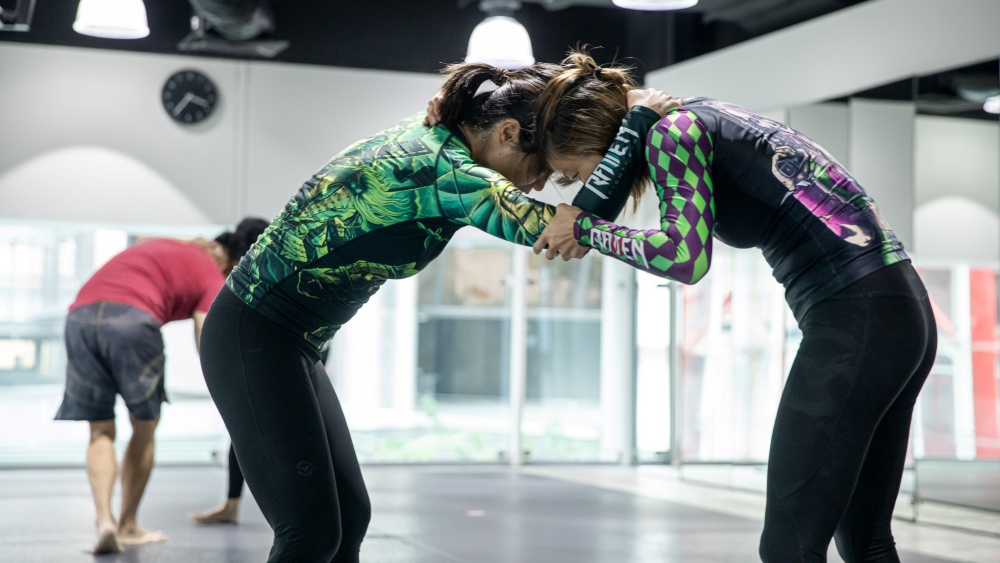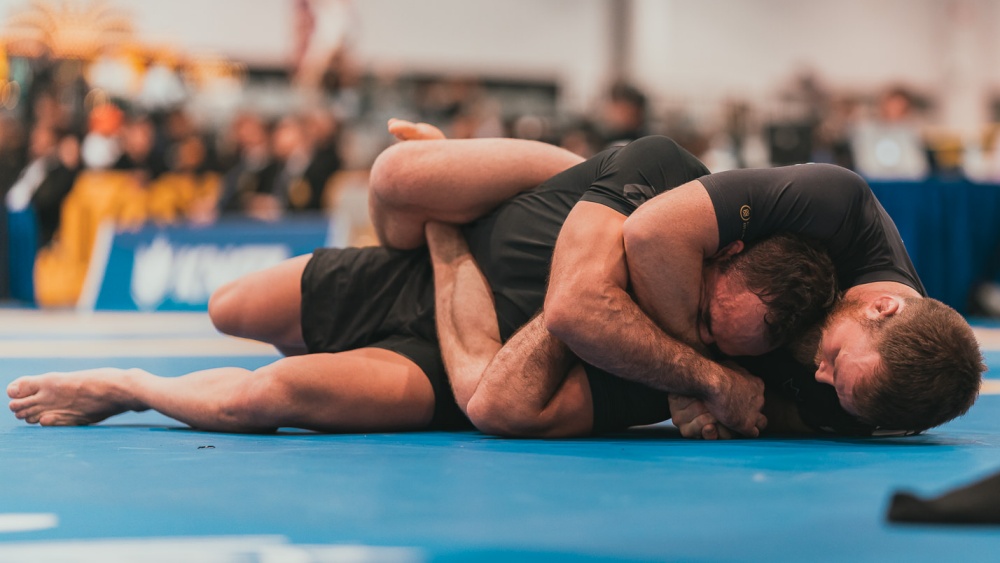In Brazilian Jiu-Jitsu, the stand-up game has been a vulnerability to many practitioners. While BJJ is primarily a ground-based martial art, takedowns are integral to becoming a complete grappler. To become efficient with takedowns, one must know how to effectively utilise their body, particularly the hands, to set up effective attacks. In this article, we will talk about how to set up takedowns from the collar tie.
What Is The Collar Tie In BJJ?
In grappling, a collar tie is a clinching hold that’s applied to control the opponent’s neck and head. As in most things in BJJ, whoever controls the head, controls the body. Using the collar tie, grapplers can break the opponent’s posture and set up different takedowns. The collar tie is performed by grabbing behind the opponent’s neck or head, and for better control, all the way behind their opposite ear, while the forearm blocks their upper body from moving forward. Typically, a collar tie is applied using one hand (single collar tie) or both hands (double collar tie).
Setting Up Takedowns With The Collar Tie
A common mistake BJJ practitioners make in the stand-up is using the collar tie without intending to attack. Remember that having good control over the opponent’s head allows you to manipulate their upper body and movements; thus, having the intent of attacking is vital when using the collar tie.
There are different ways to set up an attack with the collar tie. Some of the most common are the single/double leg, ankle pick, head snap downs, and throws. Clubbing the opponent’s head to their opposite ear while your opposite side hand blocks or controls their arm are some of the critical details you must observe when doing the collar tie. Below are some takedowns you can perform using the collar tie.
Begin with a good athletic position, which means your hips and knee are bent, your feet are naturally spread on the mat, and your head and spine are neutral. With a staggered stance, push the opponent’s shoulder and apply the collar tie with your lead hand (the same side as your forward leg). It is essential first to push the opponent’s shoulder as it serves as a line of defence as opponents can come underneath, duck your collar tie, and shoot for your legs.
Now that you applied the collar tie with your lead hand, use your other hand to attack the opponent’s leg while your lead hand goes behind your back pocket. Your lead leg takes a big step outside as your other leg follows through. This puts you in a position to apply the double leg. Finish by driving the opponent across the mat. Remember that some BJJ competitions prohibit the outside head single leg, so it’s better to finish with the double leg takedown from this set-up.
2) Ankle Pick
Ankle pick is one of the most effective and versatile takedowns you can do. Today, we will talk about the outside step outside reach ankle pick. This means that if you do the ankle pick with your left hand, your left leg will drop while your right hand applies the collar tie. Remember to level change and not advance with a penetration step when doing this ankle pick.
Start the takedown with the idea of pulling the opponent down to their knee with the collar tie. One of the critical mistakes grapplers perform when doing the ankle pick is leaving their collar tie hand up, leaving it extended as they reach for the opponent’s ankle with their other hand. Treat your collar tie as if you are doing a bicep curl to keep the opponent’s head bent so that as you change levels, their head follows down.
Assuming you lead with your right leg with a right arm collar tie and attack with your left hand, circle to your left and square up your stance. This will force the opponent to put their right leg forward, making it their lead leg. Maintain a strong collar tie throughout the attempt by curling your arm and not extending it to force the opponent’s head down and break their posture. Use your left hand to reach the opponent’s lead ankle while your left leg drops on the mat.
While holding the opponent’s ankle, there are two ways to finish: shutting the opponent’s head to the left with your collar tie and finishing with the takedown, or shooting forward for a double leg if they force to posture their head up. Remember that you can always pull the opponent with your collar tie if their legs are away from you.
3) Duck Under
The duck under is one of those flashy yet highly effective techniques. It can be used to attack the single/double leg, high crotch lift, or take the opponent’s back. Typically, the duck under is set up with the collar tie while your other hand controls the opponent’s triceps. If you apply a right-hand collar tie, your left hand will control the opponent’s triceps. Use the collar tie and tricep control to pull the opponent. As they step forward, level change, throw their arm up, and duck under. Your head goes underneath their arm to lock it up. Look up to maintain an upright posture while keeping a solid collar tie. Step your left leg forward behind the opponent’s right leg and rotate up. From this position, you can finish with the takedowns you prefer.
Conclusion
The collar tie is one of our best recommendations for developing a complete takedown game. We often see inexperienced grapplers grab a collar tie and wait for the opponent to attack. Don’t let this be you. Remember that there are risks of getting caught with flying submissions when applying the collar tie in BJJ. Therefore, you must use it to effectively set up your attacks rather than the other way around.
You may also like:

















